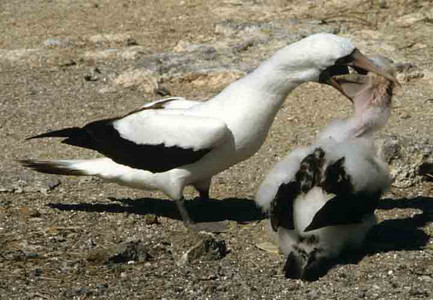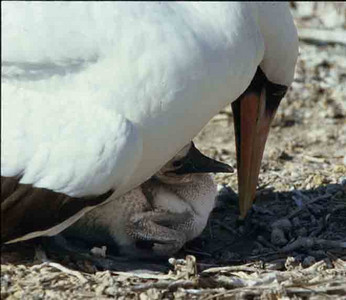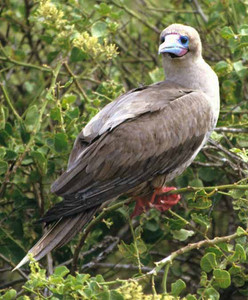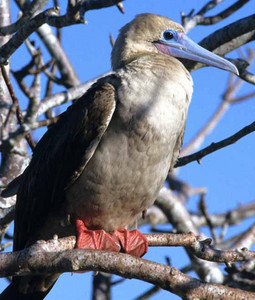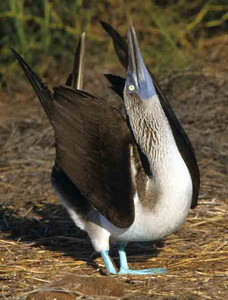
Blue-Footed Booby
1st Image: A male Blue-Footed Booby courting. He puts his tail up and points his bill at the sky, as he parades back and forth in front of his prospective mate. See the next three images to view the whols courting process. (Galapagos Islands].
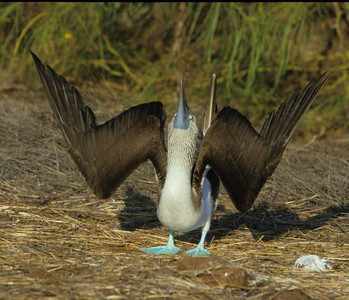
Blue-Footed Booby
2nd image: A frontal view of the male Blue-Footed Booby courting: Wings out, head and tail raised as he stands before her, seeking her sign of acceptance. [Galapagos Islands].
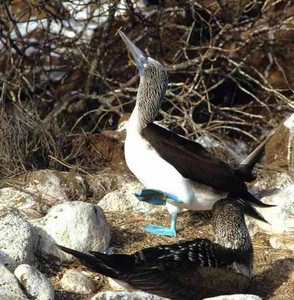
Blue-Footed Booby
3rd image: Blue-Footed Booby courting. He displays before her with a small twig in his beak--sort of like an engagement ring--to show that he is serious about building a nest. This is no great comitment, because the nest consists only of a few twigs arranged loosely on the ground, but the feeding and protecting the hatchlings from the sun is serious work. Note that she is sitting in front of him. [Galapagos Islands].
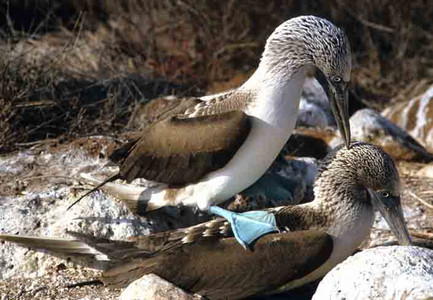
Blue-Footed Booby Mating
4th image: Blue-Footed Boobies mating. She finally sends him a receptive signal, and the pair copulate by briefly coapting their cloacas. (An orifice beneath the tail for disposing of urine, feces, and in breeding season, receiving and combining sperm with the female's eggs). Breeding may occur every 6-8 months. [The Galapagos Islands].
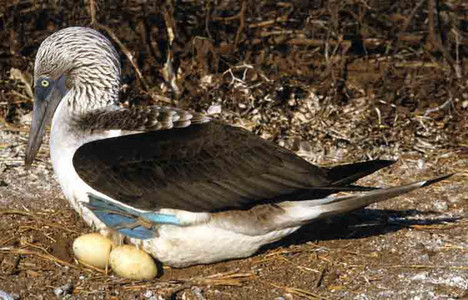
Blue-Footed Booby Nesting
Blue-Footed Booby in its sparse nest with two eggs: Both sexes take turns sitting on the eggs. It is very crucial that one parent always shield the eggs and the hatchlings from the hot sun to prevent their desiccation. [The Galapagos Islands].
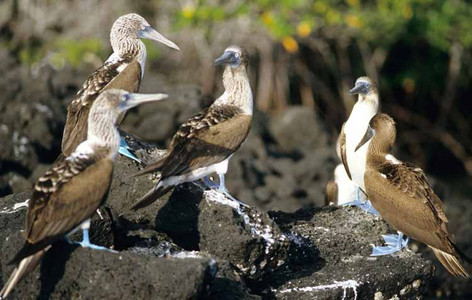
Blue-Footed Booby
Five Blue-Footed Boobies on a Rock: The rock is a launching site on which they rested and dried their feathers, and from which they plunged into the water after fish. In the water, boobies use their wings like fins to propell themselves.They are very fast and agile swimmers under water. [Galapagos Islands].
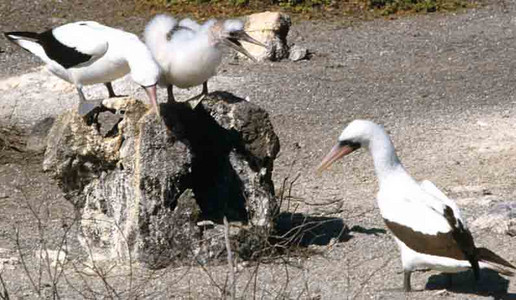
Masked Booby
The Masked Booby 'family council' with the fledging yelling at the two adults. It's probably letting them know that it is hungry. At this early age, the juvneile would be fed by one of the adults regurgitating predigested food into its beak. This species is the largest of the boobies. [Galopagos Islands].
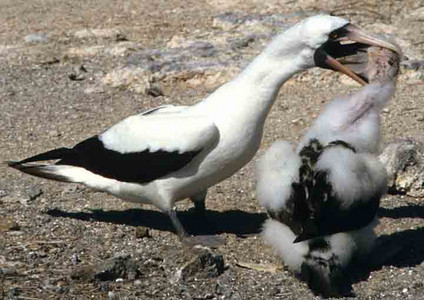
Masked Booby
These are the same two Masked Boobys as in the previous image. The young chick inserts its head well into the parent's beak. [Galopagos Islands].
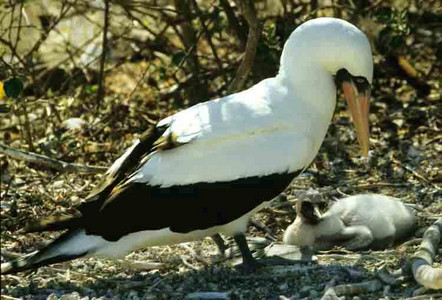
Masked Booby
A Masked Booby adult inspecting its young chick, a recent hatchling of about 5 hours old. The adult will not leave it uncovered for more than a few minutes, because the hot sun would soon desiccate it. [Galopagos Islands].
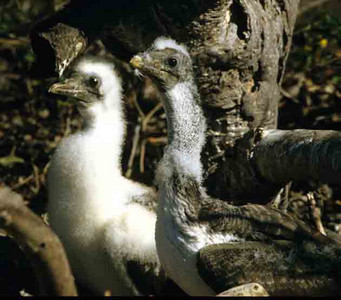
Masked Booby Chicks
The eggs of the two 4-day old chicks were laid at the same time, but the egg of the fully feathered one hatched 4-5 hours sooner than that of its sibling. This few-hour difference gives that chick an earlier start on the other hatchling by getting fed earlier, and beginning its development sooner. Thus, it is bigger and the stronger of the two, and can grab a larger feeding. The image shows that it has sought to eliminate its sibling competition by pecking out the neck feathers of the weaker, slightly younger sibling. With inadequate food and the denudation reducing its insulation from the sun, it is unlikely the weaker will survive. The parents do nothing to stop the infanticide. [Galapagos Islands].
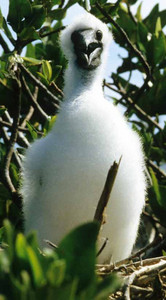
Red-Footed Booby Chick
A young juvenile Red-Footed Booby in the nest. Unfortunately, the red feet are not visible. [Galopagos Islands}.
